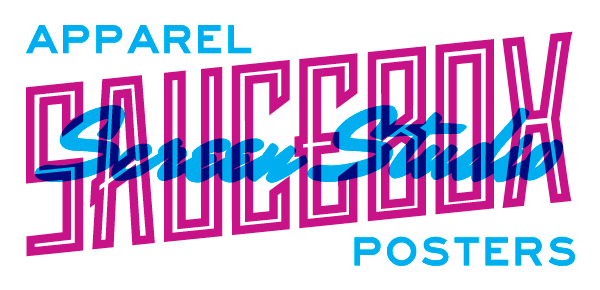garbage in, garbage out
High quality print begins with high quality art. Conversely, bad prints start with art that is too small, too rough, too grainy, or too pixelated. Lucky for you, we'll never print anything that we don't think will turn out well, so if you're supplying the art for your prints, follow the guidelines below to ensure that your job is printed cleanly and quickly, with no surprises in the final product.
Preferred File Types
Art can be supplied in a variety of ways, and if we're doing the design work, rough ideas and pencil sketches are enough. If you're creating the art yourself, read the guidelines below. Graphic creation software comes in 2 types, Vector (Adobe Illustrator, CorelDraw, Inkscape, and others), or Raster (Adobe Photoshop). If you're a nerd and are interested in a more in-depth discussion of the pros and cons of each format, this post is for you. Otherwise, the quick and dirty is below. You'll also find links to open-source software options in case you want to give them a go. You don't want to be creating this stuff in Microsoft Paint.
vector art
Adobe Illustrator (.AI)
Encapuslated Postscript (.eps)
portable document format (.pdf)
scalable vector graphics (.svg)
The optimal file type for a given job depends largely on the design, and the desired print characteristics.For most screen printing jobs, vector artwork is preferred. This type of artwork is resolution-independent, meaning that it can be resized without effecting the clarity of the print. This type of art is created in Adobe Illustrator, Corel Draw, and a few open-source applications like Inkscape. Acceptable formats of this type are .AI and .SVG. PDFs and .EPS files also often contain vector art, but they may also contain non-vector design information, so special care needs to be taken when packaging the files.
raster art
adobe photoshop (.psd)
jpeg (.jpg)
tagged image file format (.tiff)
bitmap (.bmp)
Full color, or continuous tone designs are usually best supplied in the Adobe Photoshop (.psd) format, but can also be created using open-source applications such as GIMP. These are necessary when printing process color, or photographic style prints, and they are also suitable for taking advantage of full color digital print process like sublimation or direct-to-garment printing. The key to a quality raster file is resolution. Files must be created in an artboard that is at least 300dpi at actual print size. Increasing resolution after the art is created isn't going to work; the pixel information was never there to begin with. You wouldn't record an old high school cassette tape onto a lossless mp3 and expect it to sound any better, so don't bother trying the same thing with art files. You can always shrink a raster file, but making it larger creates problems.
things to avoid
Web Graphics - Ideally, don't even use file formats intended for web use, like .gif or .png. While it's possible to create high-resolution versions of those files, the vast majority of them are only 72dpi for viewing on computer monitors, and they often contain compression artifacts since their designed to make web pages run quickly, not provide high-fidelity source material for printing.
Microsoft Word - Meant for typing letters, not graphic design. Don't use it.
Powerpoint - Meant for being shown on a screen. Don't use it.
when in doubt, let us do it for you
It ain't free, but it always works.
